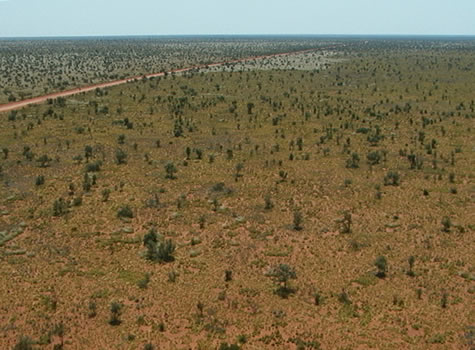Geography – Tanami desert
The beginning of the Tertiary period in the earth’s history was typified in central Australia by high temperature, rainfall and silcrete formation in extensive low-lying inland areas such as the Tanami Desert. This resulted in the deposition of the poor, sandy soils that we’ve been biking through the past 3-4 days since arriving at the Tanami track.

So why is the Tanami Desert flat but not so the Macdonell Ranges to the South and The Kimberly to the Northwest? One theory is that the Tanami forms a pivot around which a gigantic block of the earth’s crust rotated forming mountains (Macdonell Ranges) and a trough (The Kimberly). The central Tanami area – being the pivot – has therefore avoided any influence from uplifting or tearing of the earth’s crust.
This flat terrain promotes a semi-arid climate, as any moisture from rainfall perculates quickly through the upper strata of sandy soil. Also, any influence from the ocean in the form of moist air, for example, is minimal. However, fluctuations in global weather patterns can affect the geography and ecology of the region quite considerably, making it possible for a non-indigenous species – like the rabbit – to thrive so well as it has in the past (hence the name Rabbit Flat where we spent most of today laying up from the midday heat). For example, for the past 3 x years Australia has been experiencing unsually wet conditions, with higher than average rainfall. This has led to there being far more vegetation that we expected. Instead of miles and miles of bare sand dunes we’ve been treated to quite a varied desert-scape rich in spinifex, desert oaks, acacias and mulga trees.
Suggested learning activities: examine a region in your country that is subject to quite extreme climatic conditions. Investigate how fluctuations in weather conditions have affected the region’s geography and/or ecology.